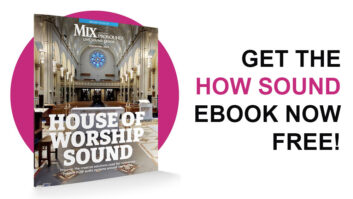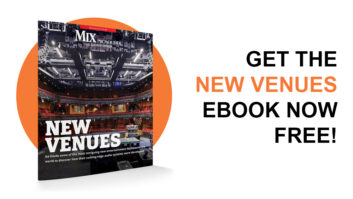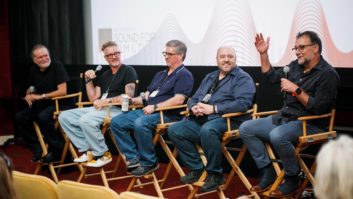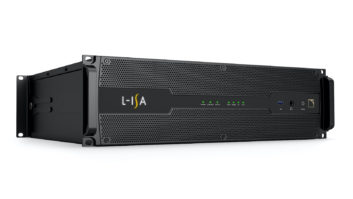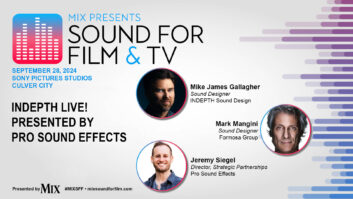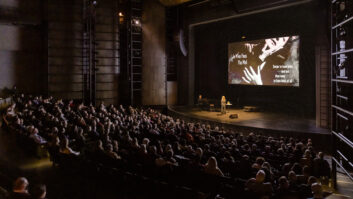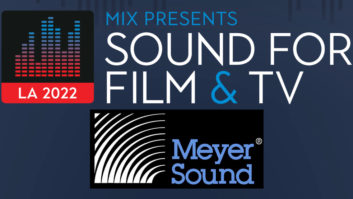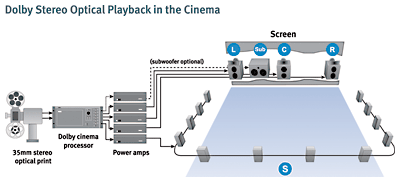
The roots of multichannel theater sound hail back to Disney’s Fantasia, which, in 1940, appeared in certain theaters with a “steered” 3-channel optical track played by a truckload of equipment. After World War II, interest in stereo films increased, and in 1953, The Robe, the first CinemaScope film, featured four tracks of stereo sound on magnetically striped film stock. This single-system approach simplified the presentation, but stereo film releases were rare, as mag-striped prints were fragile and expensive and distributors had to maintain inventories of mono and stereo prints.
Signal flow in a Dolby Stereo system
Everything changed in 1976 with A Star Is Born, the first film released with a Dolby Stereo soundtrack. The format used phase matrixing to store four channels (left/right/center/surround) onto a 2-channel format, which, in this case, was two closely spaced optical tracks on a standard 35mm film. The beauty of the system was compatibility: A 35mm Dolby Stereo film could be played anywhere, whether in a non-Dolby mono drive-in or in a theater upgraded with Dolby cinema decoders and a 4-channel playback system. And, with no appreciable cost increase in manufacturing stereo prints, film studios were receptive to the idea. By 1977, the success of blockbusters such as Star Wars and Close Encounters of the Third Kind helped push exhibitors into upgrading to the new format. Interestingly, the tens of thousands of Dolby Stereo tracks encoded onto Beta/VHS HiFi video releases laid the groundwork for a revolution in home theater, fueled by the arrival of Dolby Pro Logic — equipped stereo components in the years to come.
Today, movie prints with digital sounds have Dolby Stereo analog soundtracks for backup and compatibility with all cinemas. Dolby Surround is also used on nearly every TV surround broadcast.
